Raider Power Tools RD-BC12 Manual de utilizare
- Tip
- Manual de utilizare

RAIDER
power tools
USER’S MANUAL
○ зарядно за акумулатор
○ battery charger
○ Incarcator baterie
○ punjač akumulatora
○ polnilec za baterije
○ φορτιστησ μπαταριων
○ полнач за акумулатор
www.raider.bg
RD-BC12
Contents
2 BG схема
3 BG оригинална инструкция за употреба
10 EN original instructions’ manual
17 RO Instrucţiuni originale
24 SR Originalno uputstvo za upotrebu
31 SL novodila za uporabo
38 EL οδηγιεσ χρησεωσ
45 MK оригинални инструкции

2www.raider.bg
1. Амперметър
2. Предпазители
3. Пусков прекъсвач
Значение на знаците за опасност, задължителни изисквания и забрани.
Опасност!
Внимание - опасно електрическо напрежение!
Риск от експлозия!
Прочетете инструкцията за употреба!
Трябва да се носят защитни ръкавици!
1
2
3

3
Оригинална инструкция за употреба
Уважаеми потребители,
Поздравления за покупката на машина от най-бързоразвиващата се марка за
електрически, бензинови и пневматични машини - RAIDER. При правилно инсталиране
и експлоатация, RAIDER са сигурни и надеждни машини и работата с тях ще Ви достави
истинско удоволствие. За Вашето удобство е изградена и отлична сервизна мрежа с 45
сервиза в цялата страна.
Преди да използвате тази машина, моля, внимателно се запознайте с настоящата
“Инструкция за употреба”.
В интерес на Вашата безопасност и с цел осигуряване на правилната й
употреба, прочетете настоящите инструкции внимателно, включително препоръките и
предупрежденията в тях. За избягване на ненужни грешки и инциденти, важно е тези
инструкции да останат на разположение за бъдещи справки на всички, които ще ползват
машината. Ако я продадете на нов собственик то “Инструкцията за употреба” трябва да
се предаде заедно с нея, за да може новия ползвател да се запознае със съответните
мерки за безопасност и инструкциите за работа.
“Евромастер Импорт Експорт” ООД е упълномощен представител на
производителя и собственик на търговската марка RAIDER. Адресът на управление на
фирмата е гр. София 1231, бул. “Ломско шосе” 246, тел. 02 934 33 33, 934 10 10, www.raider.
bg; www.euromasterbg.com; e-mail: info@ euromasterbg.com.
От 2006 година във фирмата е въведена системата за управление на
качеството ISO 9001:2008 с обхват на сертификацията: Търговия, внос, износ и сервиз
на професионални и хоби електрически, пневматични и механични инструменти и обща
железария. Сертификатът е издаден от Moody International Certication Ltd, England.
Технически данни
параметър мерна
единица стойност
Модел - RD-BC12
Номинално напрежение V 230
Номинална честота Hz 50
Номинална мощност W 180/310
Номинално изходно напрежение V 12/24
Номинална изходна големина на тока A 10
Максимална изходна големина на тока A 14
1. Общи указания за безопасна работа.
Прочетете внимателно всички указания. Неспазването на приведените по-долу указания
може да доведе до токов удар, пожар и/или тежки травми. Съхранявайте тези указания на
сигурно място.
Преди да пристъпите към зареждане на Вашия изтощен автомобилен акумулатор,
внимателно прочетете и инструкциите, предоставени с акумулатора и автомобила, в който той
BG

4www.raider.bg
ще се използва.
Този уред не е предназначен за употреба от лица (включително деца) с намалени физически,
сетивни или умствени способности или липса на опит и познания.
Зарядното устройство е предназначено само за зареждане на оловно-киселинни
акумулатори.
1.1. Безопасност при работа с електрически ток.
1.1.2. Свързвайте устройството само към подходящи контакти на
електрозахранващата мрежа със заземяване.
1.1.3. Никога не използвайте зарядното устройство с повредени кабели или след като
зарядното устройство е претърпяло удар или е повредено.
1.1.4. Никога не разглобявайте зарядното устройство за акумулатори. Това трябва да се
извърши в специализиран сервизен център.
1.1.5. При необходимост захранващият кабел трябва да се подменя от квалифицирани
специалисти.
1.1.6. Никога не обръщайте полюсите, когато свързвате клемите към акумулатора.
1.2. Зарядното устройство трябва да се използва само на открито.
1.2.1. Предупреждение! Взривоопасен газ!
По време на нормална експлоатация акумулаторите генерират взривоопасен газ (водород),
а по време на зареждане, този газ се отделя в по-голямо количество.
1.2.2. Избягвайте създаването на пламъци или искри.
1.2.3. Самото зарядно устройство за акумулатори може да генерира искри. Уверете се, че
клемите не могат инцидентно да се откачат от полюсите на акумулатора.
1.2.4. Щепселът трябва да е изваден от контакта преди да пристъпите към свързване или
разединяване на кабелните клеми.
1.2.5. Никога не позволявайте кабелните клеми да се допрат една с друга.
1.2.6. По време на зареждане трябва да се осигури достатъчна вентилация.
1.2.7. Когато това се позволява от типа на акумулатора, отстранете капачките и проверете
нивото на електролита в клетките и ако е необходимо, добавете дестилирана вода. Нивото на
електролита трябва да е 5-10 мм над клетките на акумулатора.
1.2.8. При зареждане на акумулатора капачките на отделните клетки трябва да са на
мястото си.
1.2.9. Внимателно прочетете инструкциите за зареждане, предоставени от производителя и
отнасящи се за акумулаторите не изискващи поддръжка.
1.2.10. Никога не отваряйте капачките на електролита на не изискващите поддръжка
акумулатори.
1.2.11. Някои не изискващи поддръжка акумулатори имат индикатори за ниво. Когато
индикаторът показва твърде ниско ниво на киселината, акумулаторът трябва да се смени.
Никога не се опитвайте да зареждате такива акумулатори.
1.2.12. През зимата напълно изтощените акумулатори могат да замръзнат.Никога не
зареждайте замръзнали акумулатори, поради опасност от експлозия.
1.2.13. Никога не зареждайте акумулатори, които не са предвидени да се зареждат.
1.2.14. Внимание! Появата на остра миризма означава повишена концентрация на газ в
помещението. Образува се взривоопасна концентрация и при искра съществува опасност от
експлозия. Не изключвайте апарата. Не отстранявайте токозахранващите клеми. Незабавно

5
проветрете помещението. Проверете акумулатора в сервиз.
1.3. Вследствие на разяждащата киселина съществува опасност от
нараняване!
Внимание! Киселината на акумулатора има разяждащо действие. Пръските върху кожата
или облеклото трябва незабавно да се измият обилно с вода. При попаднали пръски в очите те
трябва се изплакнат с вода в продължение на 15 мин. и да се повика лекар.
Винаги носете защитни очила, затворени отстрани, киселинно-устойчиви предпазни
ръкавици и киселинно-устойчиво облекло.
1.4. Допълнителни предупреждения.
1.4.1. Никога не поставяйте зарядното устройство за акумулатори върху запалими
повърхности.
1.4.2. Никога не оставяйте зарядното устройство за акумулатори и кабелите му във вода
или върху влажни повърхности.
1.4.3. Поставяйте зарядното устройство за акумулатори в места с достатъчна вентилация.
Никога не го покривайте с други предмети, както и не го затваряйте вътре в контейнери или
затворени шкафове.
1.4.4. Зарядното устройство не е направено да спре автоматично, когато се зареди
акумулаторът и трябва да бъде изключено след приключване на зареждането, за да не се
повреди акумулатора.
1.4.5. Дръжте вентилационните отвори чисти.
1.4.6. Не зареждайте едновременно няколко акумулатора.
1.4.7. Използвайте захранващия кабел само по предназначение. Не дърпайте апарата за
кабела и не го използвайте, за да изтеглите щепсела от контакта. Пазете кабела от високи
температури, мазнини и остри ръбове.
1.4.8. Поддържайте клемите чисти и ги пазете от корозия.
2. Свързване на зарядното устройство. Последователност на операциите.
По данни на производителя на автомобила преди зареждане акумулаторът трябва да
се отдели от електрическата система на автомобила. Затова трябва да обърнете внимание
на факта, че в стандартното оборудване на автомобилите вече са включени многобройни
електронни и електрозадвижвани елементи (като например ABS, ASR, горивна помпа, бордови
компютър автомобилен телефон и др.). Появата на амплитуди в напрежението може да доведе
до евентуални повреди в тези елементи. Ето защо преди зареждане акумулаторът трябва да
се отдели от бордовата мрежа. Моля обърнете внимание на указанията в инструкциите за
експлоатация за автомобила, радиото, автомобилния телефон и др.
Стъпки за зареждане на акумулатора.
2.1. Отвинтете и отстранете капачките от акумулатора.

6www.raider.bg
2.2. Проверете нивото на киселината в клетките на акумулатора. При необходимост долейте
дестилирана вода. Внимание! Киселината в акумулатора има разяждащо действие. Веднага
измийте пръските от киселина с вода, при необходимост повикайте лекар!
2.3. Първо свържете червения кабел към плюса на акумулатора (+) след това свържете
черния кабел към минуса на акумулатора (-). (Ако акумулаторът е в автомобила, към корпуса
на автомобила далеч от акумулатора и тръбопровода за гориво).
2.4. След като свържете акумулатора към зарядното устройство, включете зарядното
устройство към контакт с 230 V ~ 50 Hz. Не се допуска свързване към контакт с друго напрежение
в мрежата.

7
Времето за зареждане се определя от състоянието на зареденост на акумулатора. Ако
акумулаторът е разреден, необходимото време за зареждане се определя с помощта на
следната формула:
Време за зареждане в часове (h) = капацитета на акумулатора в амперчаса (Аh) разделено
на зарядния ток в (A).
Пример: 16 h = 40 Аh / 2,5 A
Tочен метод на засичане – нивото на зареденост е посредством - Уред за измерване на
киселинноста (вж. Фиг. 6)
Нормално е при разреден акумулатор при зареждането му да постъпва по-голям изходен
ток. С увеличаване на времето за зареждане зарядният ток постепенно спада. При всички
акумулатори, при които зарядният ток не спада, става въпрос за дефект от рода на повреди,
обусловени от процеса на стареене , сулфатизация или късо съединение.
Точното зарядно състояние може да се определи само посредством измерване на
плътността на електролита. Измерва се с помоща на специален уред.
Стойности на плътност на електролита (кг./л. при 20°С)
1,28 акумулаторът е зареден;
1,21 акумулаторът е зареден наполовина;
1,16 акумулаторът е разреден;
2.5. След зареждането на акумулатора изключете щепсела от контакта.
След това първо освободете черния заряден кабел от минуса на акумулатора (-) след това
освободете червения заряден кабел от плюса на акумулатора (+). Отново завинтете капачките

8www.raider.bg
на акумулатора.
фиг. 7
Спазвайте указаната последователност на изключване на щипките:
- първо изключете черната (-) щипка от клемата на акумулатора, както е указано на
фиг. 8
фиг. 8
- след което изключете червената (+) щипка от клемата на акумулатора, както е
указано на фиг. 9
фиг. 9
Поставете отново капачките на акумулатора, както е указано на фиг. 10

9
фиг. 10
Уредът изключва автоматично при топлинно претоварване.
3. Поддръжка и грижи за акумулатора и за зарядното устройство.
Акумулаторът винаги трябва да е надеждно закрепен в автомобила.
Необходимо е да се гарантира изрядно свързване към електрическата система на
автомобила.
Поддържайте акумулатора чист и сух.
Леко намажете присъединителните клеми с киселиноустойчива и несъдържаща киселини
грес.
4. Опазване на околната среда.
С оглед опазване на околната среда електроинструментът, допълнителните приспособления
и опаковката трябва да бъдат подложени на подходяща преработка за повторното използване
на съдържащите се в тях суровини.
Не изхвърляйте електроинструменти при битовите отпадъци! Съгласно Директивата на
ЕС 2012/19/EC относно излезлите от употреба електрически и електронни устройства и
утвърждаването и като национален закон електроинструментите, които не могат да се използват
повече, трябва да се събират отделно и да бъдат подлагани на подходяща преработка за
оползотворяване на съдържащите се в тях ценни вторични суровини.

10 www.raider.bg
Original Instruction Manual
Dear Customer,
Congratulations on the purchase of machinery from the fastest growing brand of electric and
pneumatic tools - RAIDER. When properly installed and operating, RAIDER are safe and reliable
machines and work with them will deliver a real pleasure. For your convenience has been built and
excellent service network of 45 service station across the country.
Before using this battery charger, please carefully acquainted with these “Instructions’ manual”.
In the interest of your safety and to ensure proper use and read these instructions carefully,
including the recommendations and warnings in them. To avoid unnecessary errors and accidents,
it is important that these instructions will remain available for future reference to all who will use the
machine. If you sell it to a new owner “Instructions’ manual” must be submitted along with it to enable
new users to become familiar with relevant safety and operating instructions.
RAIDER exclusive representative of a company EUROMASTER Import Export Ltd., Soa 1231,
“Lomsko shosse 246, tel 02 934 33 33, 934 10 10, www.raider.bg; www.euromasterbg.com; e -mail:
Since 2006 the company introduced the system of quality management ISO 9001:2008 with scope
of certication: Trade, import, export and servicing of hobby and professional electrical, mechanical
and pneumatic tools and general hardware. The certicate was issued by Moody International
Certication Ltd, England.
Technical Data
parameter unit value
Model - RD-BC12
Current V 230
Frequency Hz 50
Rated Output Power W 180/310
Rated Output Voltage V 12/24
Rated Output Current A 10
Max. Output Current A 14
Displayed items of the second page:
1. LED diode illuminated red when the battery is charging and green when the
battery is already charged.
2. LED diode signals when the charger is switch o due to overloading.
3. LED diode signal when terminals for charging the battery are not placed
correctly.
EN

11
Key to danger, mandatory and prohibition signs
General danger!
Danger of electric shock!
Danger of explosion!
Read the instruction manual!
Protective gloves must be worn!
1. General guidelines for safe operation.
Read all instructions carefully. Failure of the nature following instructions can cause electric shock,
re and / or severe injuries. Keep these instructions in a safe place.
Carefully read this manual, and both the instructions provided with the battery and the vehicle in
which it will be used before charging.
This appliance is not intended for use by persons (including children) with reduced physical,
sensory or mental capabilities, or lack of experience and knowledge, unless they have been given
supervision or instruction concerning use of the appliance by a person responsible for their safety.
Children should be supervised to ensure that they do not play with the appliance.
Battery charger is suitable only to charge lead-acid battery.
1.1. Safety when working with electricity.
1.1.2. To ensure protection against indirect contacts, connect only to a suitable plug socket with
earth.
1.1.3. Never use the battery charger with damaged cables or whenever the charger has been
subjected to impact or damaged.
1.1.4. Never dismantle the battery charger. Take it to an authorized service centre.
1.1.5. Supply cable must be replaced by qualied people.
1.1.6. Never reverse the poles when connecting the clips to the battery.

12 www.raider.bg
1.2. For indoor use only.
1.2.1. Warning: explosive gas!
Batteries generate explosive gas (hydrogen) during normal operation and even greater quantities
during recharging.
1.2.2. Avoid creating ames or sparks.
1.2.3. The battery charger itself can generate sparks. Make sure that the clamps cannot be
accidentally released from the battery’s poles.
1.2.4. Make sure that the plug is unplugged from the socket before connecting or disconnecting
the cable clamps.
1.2.5. Never let the cable clamps touch each other.
1.2.6. Provide adequate ventilation during charging.
1.2.7. Whenever permitted by the type of battery, remove the caps and check the level of the
electrolyte in the cells, adding distilled water if necessary. Make sure that the electrolyte level is 5-10
mm over the battery’s cells.
1.2.8. Charge the battery with the electrolyte caps in place.
1.2.9. Carefully read the recharging instructions provided by the manufacturer for maintenance -
free batteries.
1.2.10. Never open the electrolyte caps in maintenance - free batteries.
1.2.11. Some maintenance - free batteries have level indicators. Whenever the acid level is
indicated as being too low, the battery must be replaced. Never attempt to recharge such batteries.
1.2.12. Never charge frozen batteries that might explode.
1.2.13. Never attempt to charge batteries that cannot be recharged or other types than those
indicated.
1.2.14. Important! If you smell an acrid odour of gas, this indicates that there is an acute danger
of explosion. Do not switch o the equipment. Do not remove the charger clamps. Ventilate the room
immediately. Have the battery checked by customer service sta.
1.3. The caustic acid presents a high risk of injury!
Caution! Battery acid is aggressive. Should any acid splash onto hands or clothing, wash o
immediately with soap solution. Should any acid splash into your eyes, wash it out immediately with
water (for 15 minutes) and seek the advice of a doctor.
Always wear safety goggles closed at the sides, acid-proof safety gloves, and acid-proof clothing!
1.4. Additional warnings.
1.4.1. Never position the battery charger on ammable surfaces.
1.4.2. Never place the battery charger and its cables in the water or on wet surfaces.
1.4.3. Position the battery charger with adequate ventilation. Never cover it with other objects or
close it inside containers or closed shelves.
1.4.4. The battery charger is not tted with an automatic charge stop and must be disconnected
once charge is completed so as not to damage the battery.
1.4.5. Keep the air vents clean.
1.4.6. Do not charge more than one battery at any one time.

13
1.4.7. Do not use the cable for purposes other than that for which it is designed. Do not carry the
charger by the cable and do not use is to pull the plug out of the socket. Protect the cable from heat,
oil and sharp edges.
1.4.8. Keep the connectors clean and protect them from corrosion.
2. Connection of battery charger. Sequence of operations.
Most motor vehicle manufacturers recommend that the battery should be disconnected from
the vehicles electrical system before being charged. We would like to point out that even standard
vehicles are tted with a whole host of electronic equipment (such as ABS, ASR, injection pump and
on-board computer). Any voltage peaks that occur may cause defects in these electronic modules.
Therefore the battery should be disconnected from the electrical system before being charged.
Please also refer to the instructions in the owner’s manuals for the car, radio, navigation system,
etc.
Proceed as follows to change the battery.
2.1. Release or remove the battery stoppers (if tted) from the battery.
2.2. Check the acid level in the battery. If necessary, top up the battery with distilled water (if
possible). Important. Battery acid is aggressive. Rinse o any acid splashes thoroughly with lots of
water and seek medical advice if necessary.!
2.3. First connect the red charging cable to the positive pole of the battery. Then connect the black
charging cable to the bodywork of the vehicle away from the battery and the petrol pipe.

14 www.raider.bg
2.4. After the battery has been connected to the charger, you can connect the charger to a socket
supplying 230V~50Hz. Do not connect it to a socket that supplies any other mains voltage.
Calculating the charging time.
The charging time depends on the charge status of the battery. If the battery is fully discharged,
the approximate charging time can be calculated using the following formula:
Charging time (h) = Battery capacity in (Аh) / charging current (A).
Example: 16 h = 40 Аh / 2,5 A
A high initial current, approximately equal to the rated current will ow in a normally discharged
battery. As the charging time increases, the charging current will fall. Old batteries for which the
charging current does not fall are suering from a defect, such as a cell short circuit or ageing damage.
A high charge can only be identied by measuring the acid density using an acid tester.
Acid density values (kg/l at 20°C).
1.28 Battery charged;
1.21 Battery semi-charged;
1.16 Battery discharged;

15
2.5. Pull the plug out of the socket.
First disconnect the black charging cable from the bodywork (-). Then release the red charging
cable from the positive pole on the battery (+). Screw or push the battery stoppers back into position
(if there are any).

16 www.raider.bg
The appliance is equipped with a thermostatic cut-out with automatic reset which is tripped in case
of thermal overload to protect the device against any overheating.
3. Maintenance and care of the battery.
Ensure that your battery is always tted securely.
A perfect connection to the cable network of the electrical system must be ensured at all times.
Keep the battery clean and dry.
Apply a thin coating of grease to the connection terminals using an acid-free, acid-resistant grease.
4. Environmental protection.
In view of environmental protection electrical appliances, additional accessories and packing must
be subject to appropriate processing for reuse of the compound materials.
According the European Guideline 2012/19/EC for Waste Electrical and Electronic Equipment
and its implementation into national right, power tools that are no longer usable must be collected
separately and disposed of in an environmentally correct manner.

17
Instrucţiuni originale
Dragi utilizatori,
Felicitări pentru achiziţionarea unui suantă de aer cald marca cu cel mai mare
succes de pe piaţă - Raider. Atunci când sunt instalate şi gata de operare, RAIDER sunt cele
mai sigure şi abile maşini şi lucrand cu ele va o adevarata placere. Pentru confortul dvs. a
fost construita şi elaborata o reţea de servicii excelente si centre de service din întreaga ţară.
Înainte de a utiliza suantă de aer cald, vă rugăm să va familiarizati cu atenţiein legatura cu
aceste instrucţiuni “pentru utilizare.
În interesul siguranţei dumneavoastră şi pentru a asigura utilizarea corespunzătoare
a acestuia, citiţi cu atenţie aceste instrucţiuni, inclusiv recomandările şi avertizările din ele.
Pentru a evita erorile de folosire inutile şi accidentele, este important ca aceste instrucţiuni
sa rămâna disponibile pentru referinţe ulterioare tuturor celor care vor utiliza cricul. Dacă
revindeti unui nou proprietar “Instrucţiunile de utilizare”, trebuie să e prezentate împreună
cu el pentru a permite utilizatorilor noi să se familiarizeze cu instructiunile de siguranţă şi
instrucţiunile de operare.
RAIDER marca exclusiva a societăţii EUROMASTER Import Export SRL, Soa 1231,
“Lomsko shosse 246, tel 02 934 33 33, 934 10 10, www.raider.bg; www.euromasterbg.com,
e-mail: info @ euromasterbg. com.
Din anul 2006, compania a introdus sistemul de management al calitatii ISO
9001:2008, cu domeniul de aplicare al certicare: Comert, importul, exportul şi service-hobby
şi profesionale unelte electrice, mecanice şi pneumatice şi hardware-ul în general. A fost
eliberat certicatul de Moody International Certication Ltd., England.
Detalii tehnice
Parametrii Unitate Valoare
Model - RD-BC12
Voltaj V 230
Frecventa Hz 50
Putere nominala W 180/310
Tensiunea nominala de iesire V 12/24
Evaluat la curent de ieşire A 10
Max. ieşire curent A 14
Elementele aşate de pagina a doua:
1. Dioda LED-ul aprins roşu când bateria se încarcă şi verde atunci când
acumulatorul este deja încărcată.
2. Semnalele LED dioda atunci când încărcătorul este oprit din cauza supraîncărcarea.
3. Semnalul dioda LED atunci când terminale pentru încărcarea acumulatorului nu sunt plasate
corect.
RO

18 www.raider.bg
Principalele semne de pericol, obligatorii şi interzicerea
General pericol!
Pericol de electrocutare!
Pericol de explozie!
Citiți manualul de instrucțiuni!
Mănuşi de protecţie trebuie să e purtat!
1. Orientările generale pentru funcţionarea în siguranţă.
Citiţi toate instrucţiunile cu atenţie. Nerespectarea de către următoarele instrucţiuni naturii poate
provoca şocuri electrice, incendii şi / sau vătămări grave. Păstraţi aceste instrucţiuni într-un loc sigur.
Citiţi cu atenţie acest manual, şi că atât instrucţiunile furnizate cu bateria şi vehiculul în care va
folosit înainte de încărcare.
Acest aparat nu este destinat utilizării de către persoane (inclusiv copii) cu capacităţi reduse zice,
senzoriale sau mentale, sau lipsa de experienţă şi cunoştinţe, cu excepţia cazului în care acestea
au fost date de supraveghere sau instrucţiuni cu privire la utilizarea aparatului de către o persoană
responsabilă pentru siguranţa lor.
Copiii trebuie supravegheaţi pentru a se asigura că acestea nu se joacă cu aparatul.
Incarcatorul pentru baterii este potrivit doar pentru a încărca acumulatorul plumb-acid.
1.1. Siguranţă atunci când se lucrează cu energie electrică.
1.1.2. Pentru a asigura protecţie împotriva contactelor indirecte, conectaţi doar la o priza potrivita
cu pământ.
1.1.3. Nu folosiţi niciodată încărcător cu cabluri deteriorate sau ori de câte ori încărcătorul a fost
supus la impact sau deteriorate.
1.1.4. Niciodată nu demontaţi încărcătorul de baterie. Ia-o la un centru de service autorizat.
1.1.5. Cablu de alimentare trebuie să e înlocuite de oameni calicaţi.
1.1.6. Nu inversa polii atunci când vă conectaţi clipurile la baterie.

19
1.2. Pentru utilizarea în interior doar.
1.2.1. Atenţie: gaz exploziv!
Baterii genera gaze explozive (hidrogen) în timpul funcţionării normale şi cantităţile chiar mai
mare în timpul reîncărcare.
1.2.2 Evitaţi crearea de ăcări sau scântei..
1.2.3. Incarcatorul pentru baterii în sine poate genera scântei. Asiguraţi-vă că clemele nu poate
accidental eliberat din polii bateriei.
1.2.4 Asiguraţi-vă că ştecherul este deconectat de la priză înainte de a conecta sau deconecta
cleme..
1.2.5. Nu lăsaţi niciodată cleme atinge reciproc.
1.2.6. Furnizaţi o ventilaţie adecvată în timpul încărcării.
1.2.7 Ori de câte ori permise de tipul de baterie, scoateţi capacele si vericati nivelul de electrolit
din celule, adăugând apă distilată, dacă este necesar.. Asiguraţi-vă că nivelul electrolitului este de
5-10 mm peste celulele bateriei.
1.2.8. Încărcaţi acumulatorul cu capacele de electrolit în loc.
. 1.2.9 citiţi cu atenţie instrucţiunile de reîncărcare furnizate de către producătorul de întreţinere
- baterii gratuit.
. 1.2.10 Nu deschideţi capacele electrolit în întreţinere - baterii gratuit.
. 1.2.11 Unele întreţinere - baterii libere au indicatorii de nivel. Ori de câte ori nivelul de acid este
indicată ca ind prea scăzut, bateria trebuie înlocuită. Nu încercaţi niciodată să reîncărcaţi bateriile
astfel.
1.2.12. Nu încărcaţi niciodată bateriile congelate care ar putea exploda.
1.2.13. Nu încercaţi niciodată să încărcaţi baterii care nu pot reîncărcate sau tipuri, altele decât
cele indicate.
1.2.14. Important! Dacă miros un miros acru de gaz, acest lucru indică faptul că există un pericol
acut de explozie. Nu opriţi echipamentul. Nu scoateţi încărcătorul cleme. Aerisiţi camera imediat. Au
vericat bateria de către personalul de serviciu pentru clienţi.
1.3. Acid caustic prezintă un risc ridicat de accidentare!
Atenţie! Acid de baterie este agresiv. În cazul în care stropi de acid pe maini sau haine, spălaţi
imediat cu soluţie de săpun. În cazul în care stropi de acid în ochi, spălaţi imediat cu apă (timp de 15
minute) şi să caute sfatul unui medic.
Purtaţi întotdeauna ochelari de protecţie închisă la laturi, acid-proof mănuşi de protecţie, şi acid-
proof îmbrăcăminte!
1.4. Avertismente suplimentare.
1.4.1. Nu poziţia incarcatorul pe suprafete inamabile.
1.4.2. Nu aşezaţi niciodată încărcătorul de baterie şi cablurile sale în apă sau pe suprafeţe umede.
1.4.3 Poziţia încărcătorul de baterie cu o ventilaţie adecvată.. Nu-l acopere cu alte obiecte sau
închideţi-o în interiorul containere sau rafturi închise.
1.4.4 Incarcatorul pentru baterii nu este echipat cu o oprire de încărcare automată şi trebuie să e
deconectat odată ce taxa este completată astfel încât să nu se deteriorează bateria.

20 www.raider.bg
1.4.5. Pastrati oriciile de aer curat.
1.4.6. Nu încărcaţi mai mult de o baterie la un moment dat.
1.4.7. Nu folositi cablul pentru alte scopuri decât cele pentru care este proiectat. Nu transportaţi
încărcătorul de cablu şi nu utilizaţi este să scoată din priză din priză. Protejaţi cablul de la marginile
de căldură, ulei şi ascuţite.
1.4.8. Pastrati conectorii de curat şi de a le proteja de coroziune.
2. Conectarea incarcator de baterie. Secvenţă de operaţii.
Majoritatea producătorilor de autovehicule recomanda ca bateria ar trebui să e deconectate de
la sistemul vehicule electrice înainte de a perceput. Ne-ar dori să sublinieze că, chiar şi vehiculele
standard sunt echipate cu o serie întreagă de echipamente electronice (cum ar ABS, ASR, pompa
de injecţie şi de la computer de bord). Orice vârfuri de tensiune care pot apărea pot provoca defecte
în aceste module electronice. Prin urmare, bateria ar trebui să e deconectate de la sistemul electric
înainte de a perceput.
Vă rugăm, de asemenea, să consultaţi instrucţiunile din manualele proprietarului pentru masina,
radio, sistem de navigare, etc
Mai departe, după cum urmează pentru a schimba bateria.
Lansat 2.1 sau eliminarea dopuri acumulatorul (dacă există) de la baterie.
2.2 Vericaţi nivelul de acid din baterie.. Dacă este necesar, partea de sus a bateriei cu apă
distilată (dacă este posibil). Important. Acid de baterie este agresiv. Se clăteşte de pe orice acidul bine
cu multa apa si cereti sfatul medicului, dacă este necesar!
2.3. Conectaţi mai întâi cablul de încărcare roşu la polul pozitiv al bateriei. Apoi conectaţi cablul
negru de încărcare la caroseria vehiculului departe de baterie şi conducta de benzină.
Pagina se încarcă...
Pagina se încarcă...
Pagina se încarcă...
Pagina se încarcă...
Pagina se încarcă...
Pagina se încarcă...
Pagina se încarcă...
Pagina se încarcă...
Pagina se încarcă...
Pagina se încarcă...
Pagina se încarcă...
Pagina se încarcă...
Pagina se încarcă...
Pagina se încarcă...
Pagina se încarcă...
Pagina se încarcă...
Pagina se încarcă...
Pagina se încarcă...
Pagina se încarcă...
Pagina se încarcă...
Pagina se încarcă...
Pagina se încarcă...
Pagina se încarcă...
Pagina se încarcă...
Pagina se încarcă...
Pagina se încarcă...
Pagina se încarcă...
Pagina se încarcă...
Pagina se încarcă...
Pagina se încarcă...
Pagina se încarcă...
Pagina se încarcă...
Pagina se încarcă...
Pagina se încarcă...
Pagina se încarcă...
Pagina se încarcă...
Pagina se încarcă...
Pagina se încarcă...
Pagina se încarcă...
Pagina se încarcă...
Pagina se încarcă...
Pagina se încarcă...
Pagina se încarcă...
Pagina se încarcă...
Pagina se încarcă...
Pagina se încarcă...
Pagina se încarcă...
Pagina se încarcă...
Pagina se încarcă...
Pagina se încarcă...
-
 1
1
-
 2
2
-
 3
3
-
 4
4
-
 5
5
-
 6
6
-
 7
7
-
 8
8
-
 9
9
-
 10
10
-
 11
11
-
 12
12
-
 13
13
-
 14
14
-
 15
15
-
 16
16
-
 17
17
-
 18
18
-
 19
19
-
 20
20
-
 21
21
-
 22
22
-
 23
23
-
 24
24
-
 25
25
-
 26
26
-
 27
27
-
 28
28
-
 29
29
-
 30
30
-
 31
31
-
 32
32
-
 33
33
-
 34
34
-
 35
35
-
 36
36
-
 37
37
-
 38
38
-
 39
39
-
 40
40
-
 41
41
-
 42
42
-
 43
43
-
 44
44
-
 45
45
-
 46
46
-
 47
47
-
 48
48
-
 49
49
-
 50
50
-
 51
51
-
 52
52
-
 53
53
-
 54
54
-
 55
55
-
 56
56
-
 57
57
-
 58
58
-
 59
59
-
 60
60
-
 61
61
-
 62
62
-
 63
63
-
 64
64
-
 65
65
-
 66
66
-
 67
67
-
 68
68
-
 69
69
-
 70
70
Raider Power Tools RD-BC12 Manual de utilizare
- Tip
- Manual de utilizare
Lucrări înrudite
-
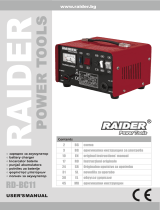 Raider Power Tools RD-BC11 Manual de utilizare
Raider Power Tools RD-BC11 Manual de utilizare
-
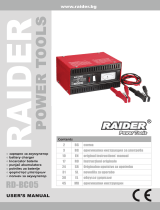 Raider Power Tools RD-BC05 Manual de utilizare
Raider Power Tools RD-BC05 Manual de utilizare
-
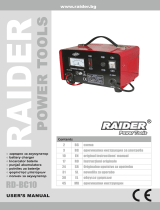 Raider Power Tools RD-BC10 Manual de utilizare
Raider Power Tools RD-BC10 Manual de utilizare
-
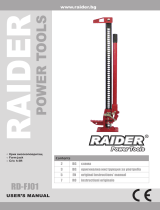 Raider Power Tools RD-FJ01 Manual de utilizare
Raider Power Tools RD-FJ01 Manual de utilizare
-
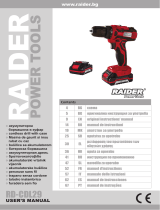 Raider Power Tools RD-CDL29 Manual de utilizare
Raider Power Tools RD-CDL29 Manual de utilizare
-
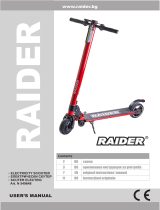 Raider Power Tools Electricity scooter Raider Manual de utilizare
Raider Power Tools Electricity scooter Raider Manual de utilizare
-
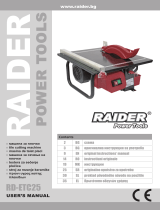 Raider Power Tools RD-ЕTC25 Manual de utilizare
Raider Power Tools RD-ЕTC25 Manual de utilizare
-
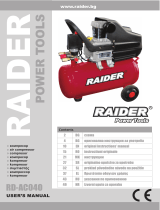 Raider Power Tools RD-AC04O Manual de utilizare
Raider Power Tools RD-AC04O Manual de utilizare
Alte documente
-
RAIDER Pro RDP-CDL30 Manual de utilizare
-
RAIDER Pro RDP-SPC20 Manual de utilizare
-
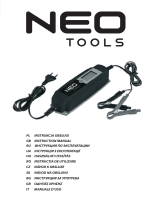 NEO TOOLS 11-990 Manualul proprietarului
NEO TOOLS 11-990 Manualul proprietarului
-
ULTIMATE SPEED ULGD 3.8 A1 Translation Of Original Operation Manual
-
ULTIMATE SPEED ULG 3.8 B1 Operating Instructions Manual
-
ULTIMATE SPEED ULG 12 A2 Operation and Safety Notes
-
Ultimate ULG 3.8 A1 BATTERY CHARGER Operation and Safety Notes
-
RAIDER Pro RDP-R20 Manual de utilizare














































































